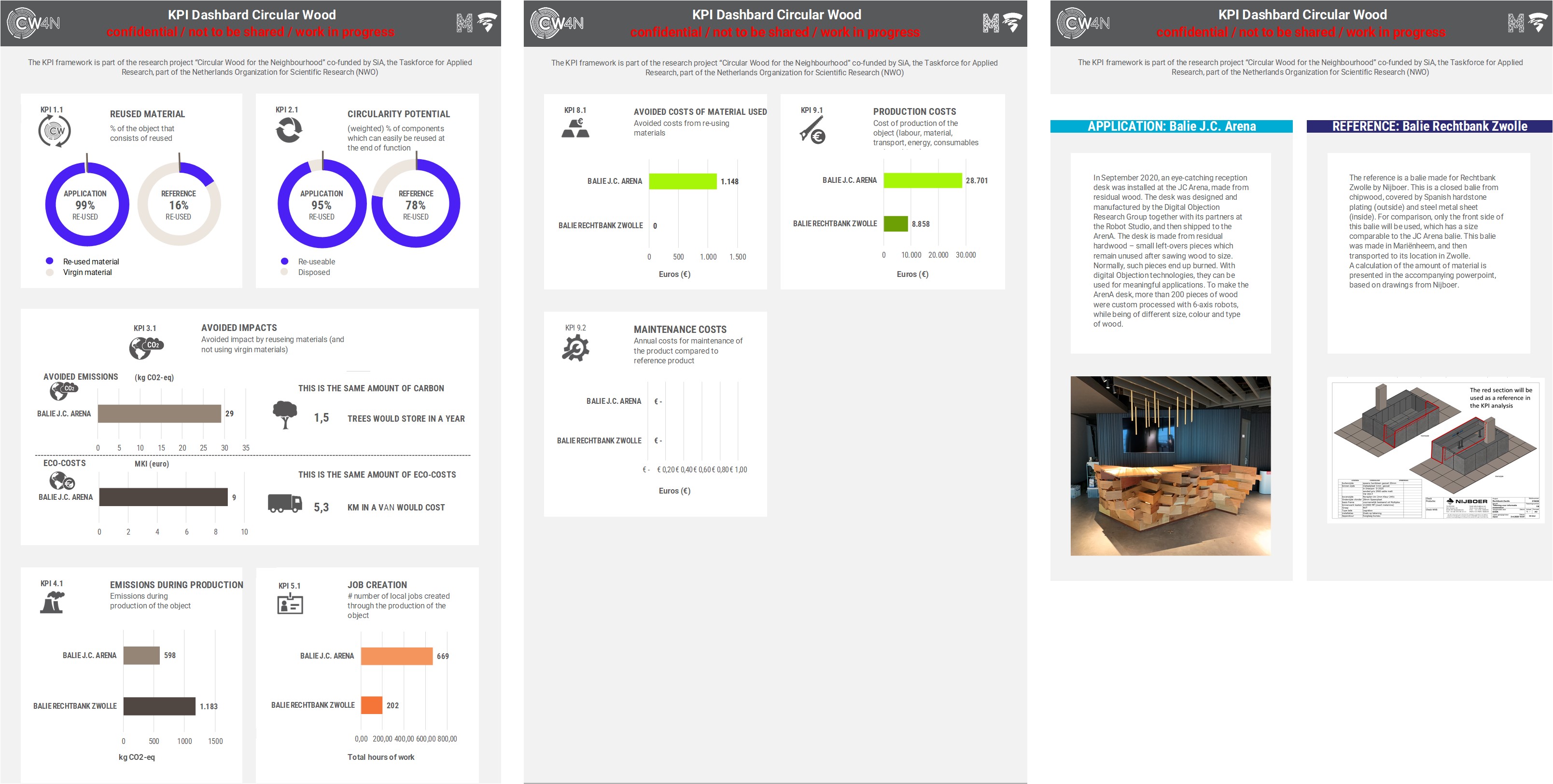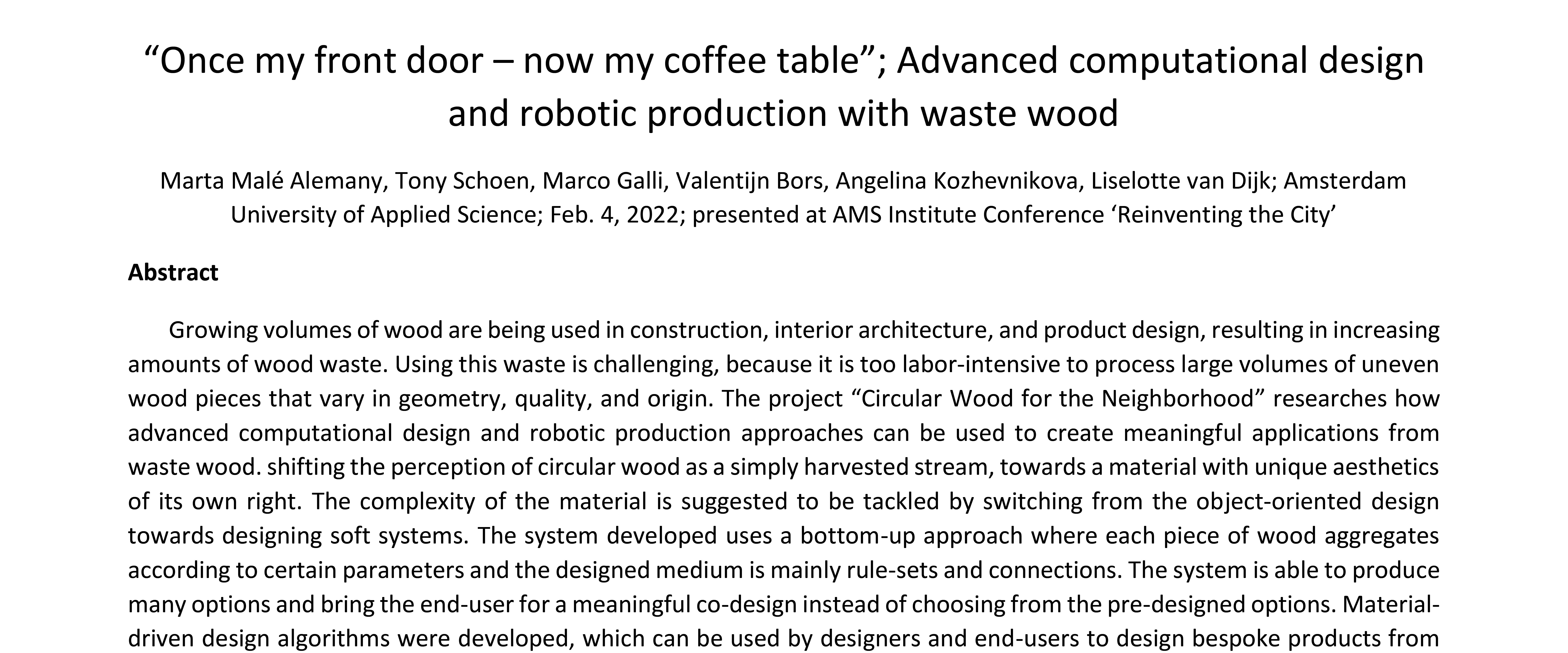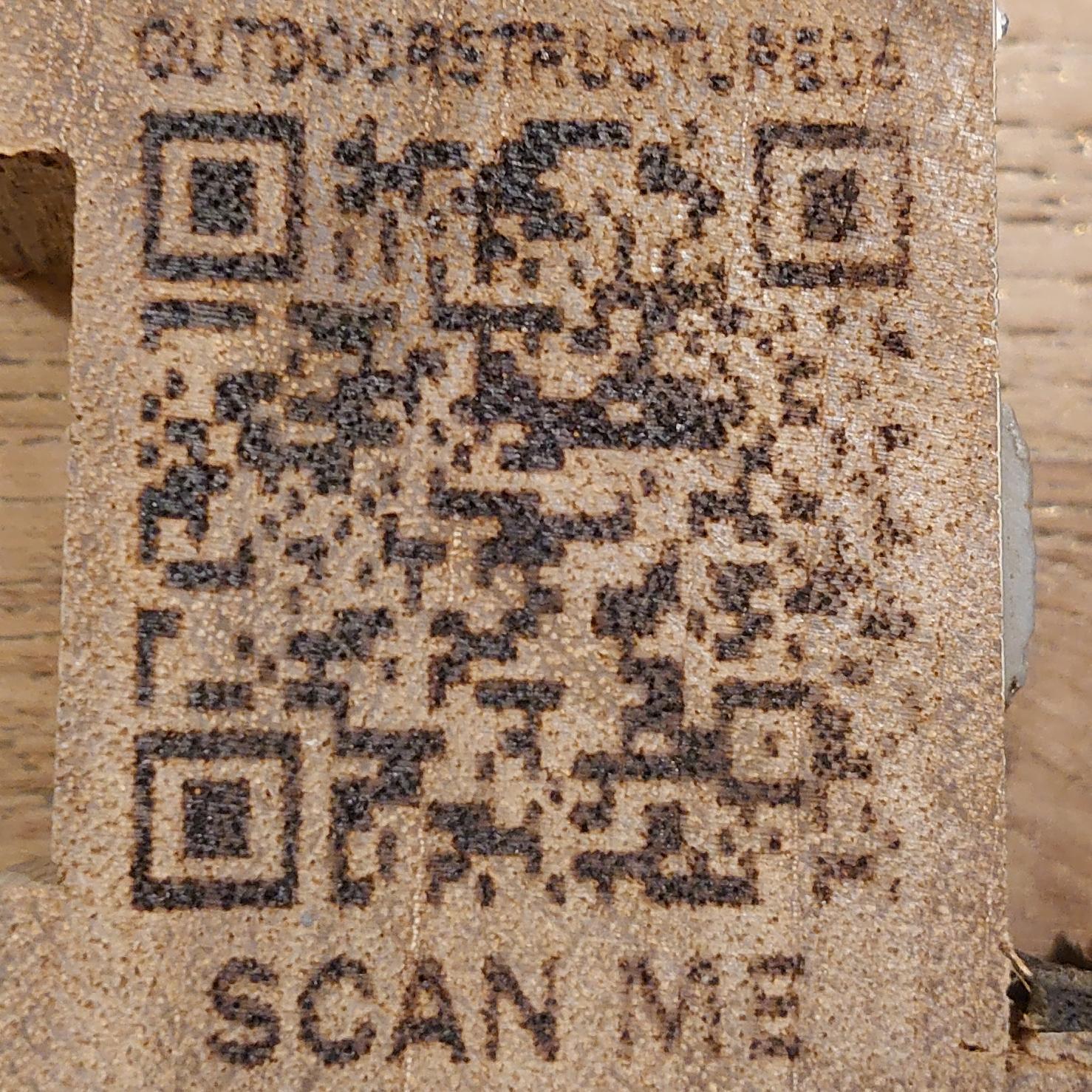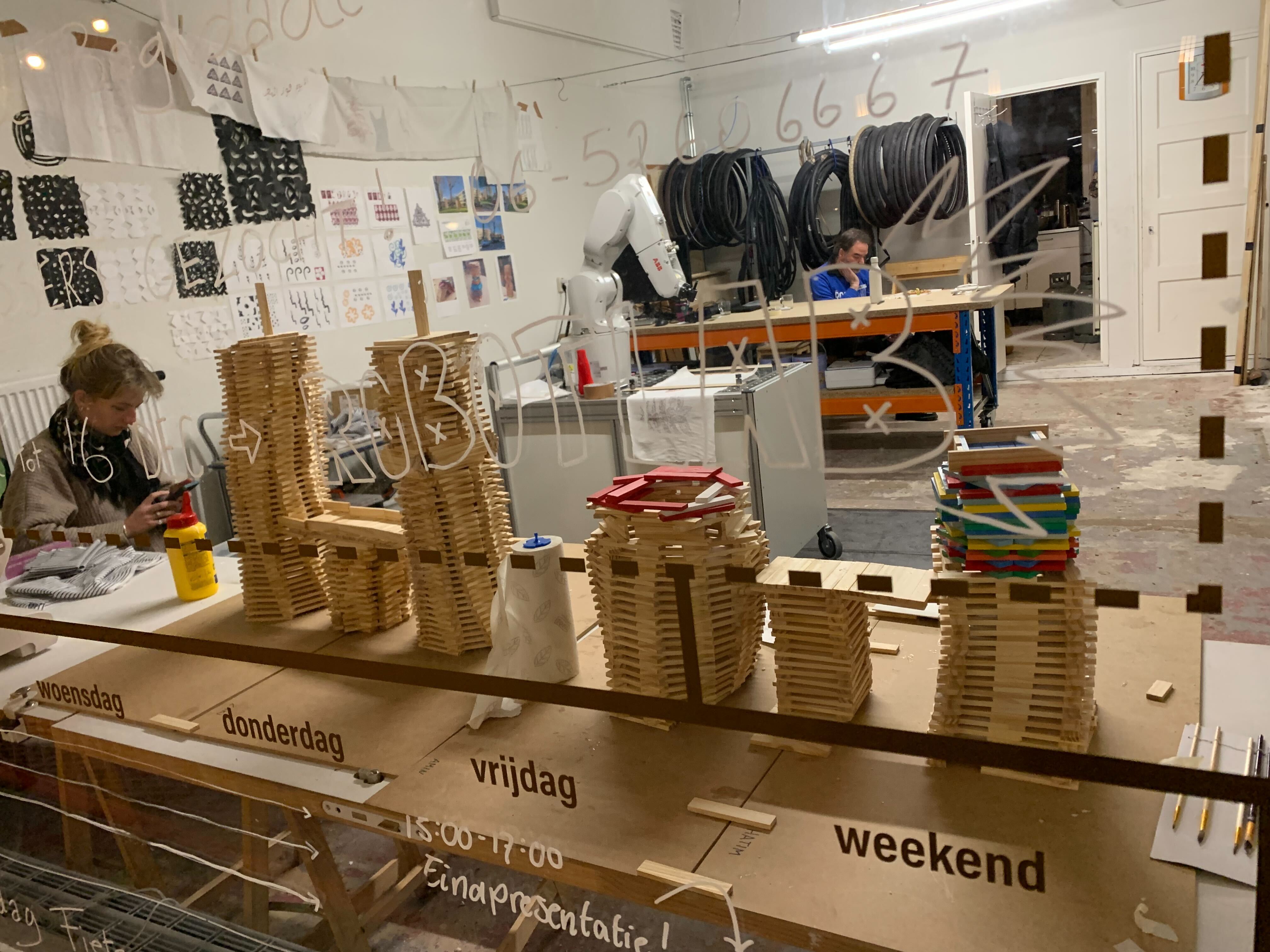Project deliverables
CW4N worked on concrete and tangible answers to the research questions. The wood survey used the actual data from renovation projects from Ymere and Rochdale. Wood from ongoing renovation projects was harvested to work on, at the Robot Lab. For the three cases, prototypes were fabricated at the Robot Lab, demonstrating in practice the potential of digital design and robotic production for circular wood applications.
An exhibition of project findings (containing texts, image renders, videos, prototypes, and full-scale AR models) was developed and displayed at the three public organizations connected to the project: the municipality of Amsterdam (at the Stadstimmertuin) and at the headquarters of housing corporations Rochdale and Ymere.
Project deliverable: the KPI-framework impact assessment tool
The KPI model is a set of nine indicators, which can be used to analyze the impact of a circular application made of waste wood. A longlist of 20 indicators in four categories (material management, environmental, socio-cultural and economic) was drafted and then condensed to a set of 8 favorite indicators.
To calculate the indicators, validated models, databases and calculation models were used, e.g. the Idemat tool and Ecoinvent database for environmental impact and the BREEAM calculation method on releasability (“losmaakbaarheid”) for the circularity indicator.

Project deliverable: conference papers
Project results were shared during four specific events for practice and society:
• Presentation at the DRIVE festival at the Dutch Design Week (October 20, 2021).
• Presentation at the AMS Institute Conference ‘Reinventing the City’ (February 4, 2022). The conference paper can be downloaded here.
• Project seminar at the Week van de Circulaire Economie (online, February 11, 2022).
• Presentation at the Renovatiebeurs (May 18, 2022).

Project deliverable: AR-models
The use of digital design tools gives good opportunities for augmented reality(AR) presentation of designs. DPRG developed the technology to visualize designs in your own environment, with your smart phone or tablet. On apple devices, simply scan the QR-code and the model will show up. On android devices, you need to install an AR-viewer to view the model related to the QR-code. Try it for yourself, by scanning one of these QR-codes!


Project follow-up: community engagement
As a direct follow-up of CW4N, DPRG together with Cascoland started the exploration of digital design and robotic production with groups of tenants of the Amsterdam Nieuw-West Deysselbuurt, to work with them on location, hands-on, to create urban objects in connection to a large renovation project from housing corporation Rochdale.
As a first step towards such objects, a 1-week workshop with on-site robots was held on Dec 12-16, in the Deysselbuurt, with representatives from the Children’s Council (de Kinderraad, a self-organized group of neighborhood kids from 7-13 years old) and a group of ladies working on the creation of dresses with personalized patterns. (The workshop was co-financed by the HvA COE’s Creative Industry and City Net Zero, with support of the Civic Interaction Design lectorate).


